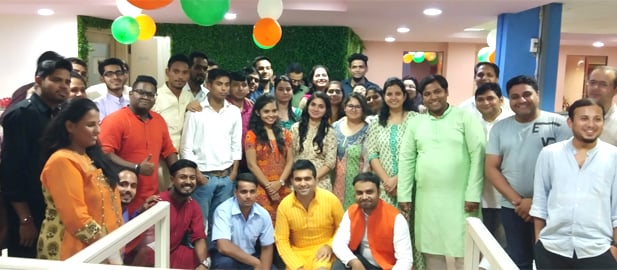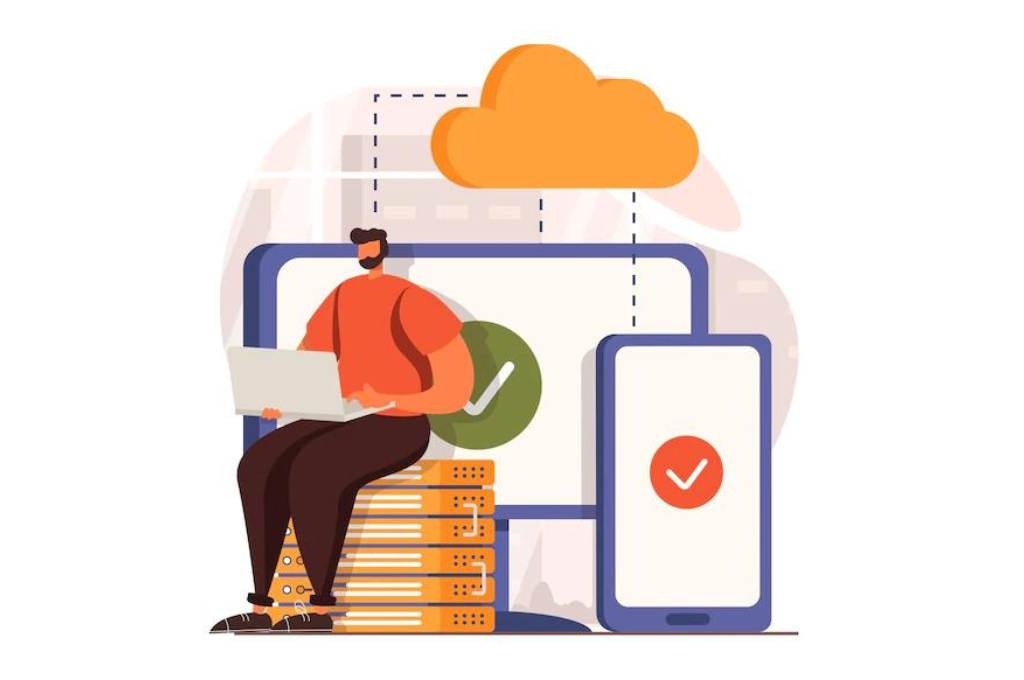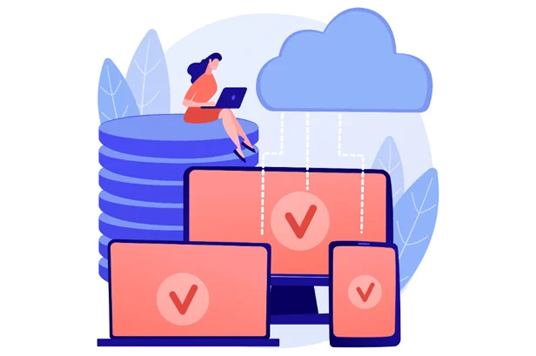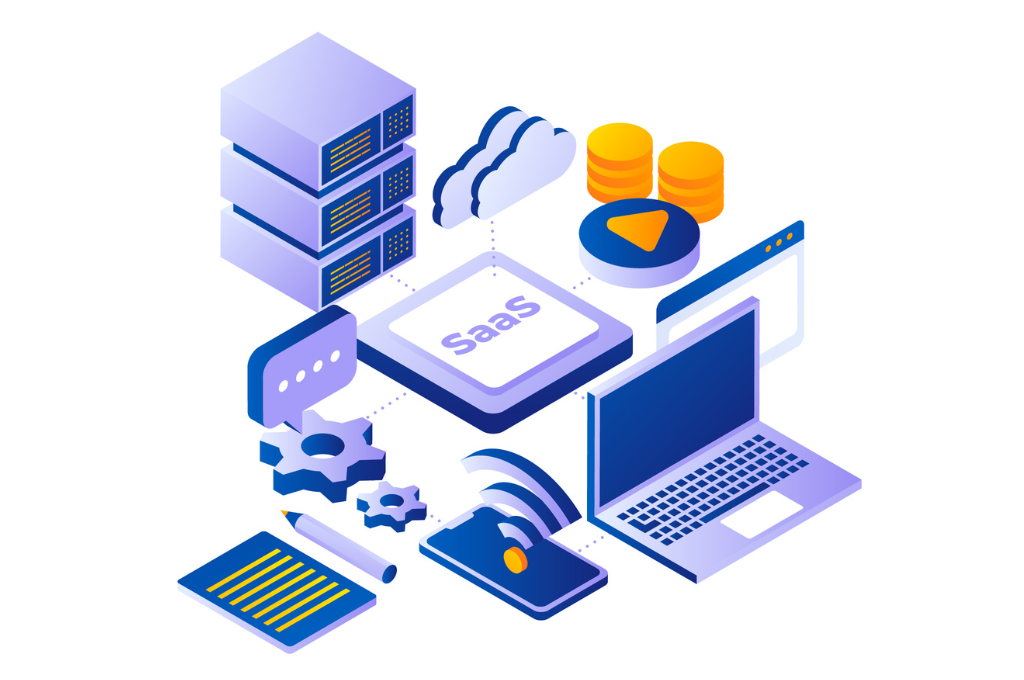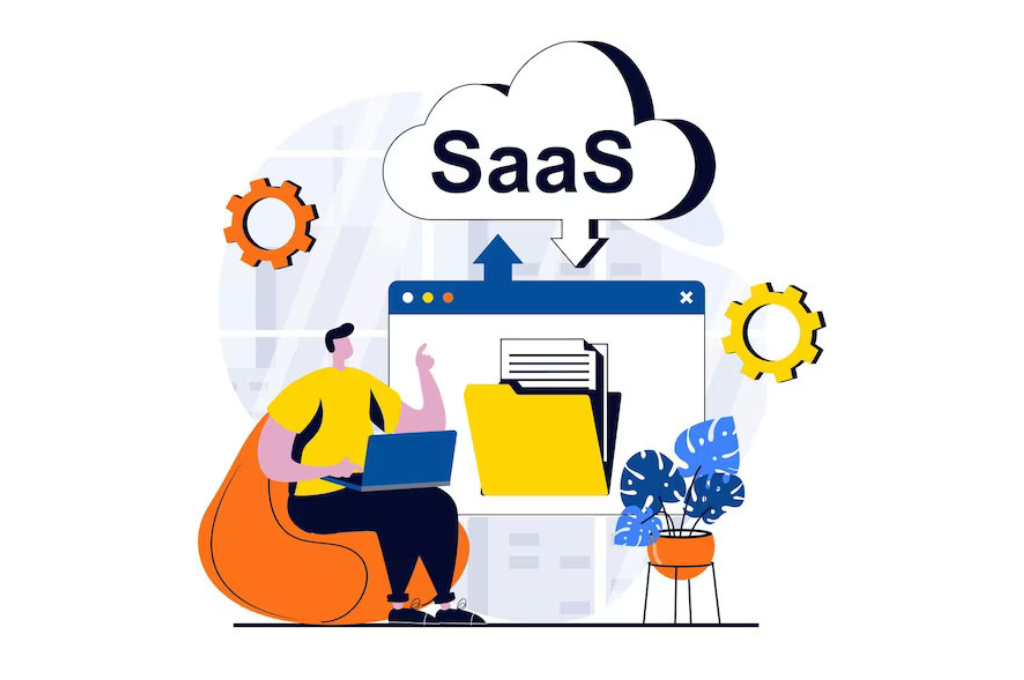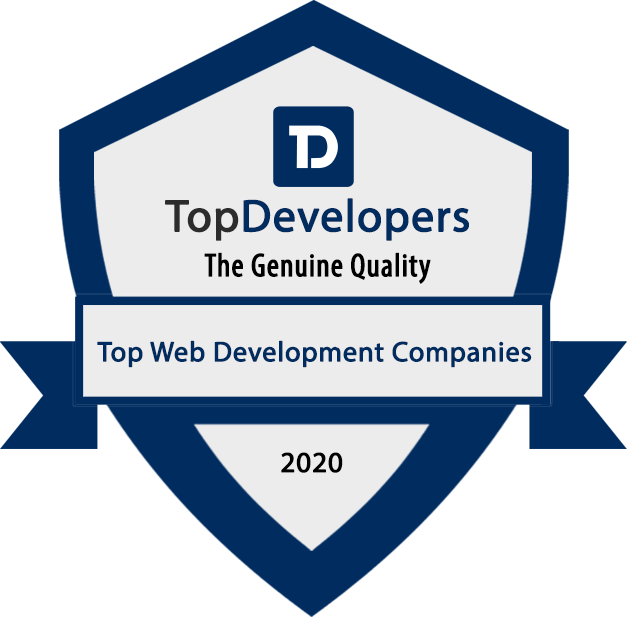Building SaaS in 2025: Remote‑First by Design
Remote‑first isn’t just about working from home—it’s a cultural and operational mindset fully embedded in every level of SaaS development.
-
Evolution of remote SaaS development post‑2020
In the aftermath of global disruptions, remote collaboration moved from makeshift to mainstream. By 2025, tech stacks have evolved to include globally distributed teams supported by synchronous and asynchronous tools. Developers, product managers, and QA specialists span time zones, delivering round‑the‑clock cycles. This setup has raised the bar: teams need standardized workflows, real-time visibility, and robust communication methods to maintain excellence at scale.
-
Rise of remote‑first and hybrid team models
Many startups and enterprises now adopt remote‑first hiring to access global talent without relocation constraints. Hybrid models—anchored by a few core physical nodes—combine the warmth of in‑person bonding with remote agility. This balance helps mitigate isolation, improves cultural cohesion, and supports dynamic collaboration between in‑office and distributed team members.
-
Benefits and challenges in today’s context
Remote‑first structures offer clear advantages: 24/7 development cycles, cost savings on real estate, and global market sensitivity. But they also bring challenges: potential time‑zone confusion, lack of social touchpoints, and communication misalignment. Overcoming these requires intentional cultural rituals (like virtual coffee breaks), clear documentation, and trust‑based management. The companies that thrive design remote work into their DNA, not just retrofit it.
Setting the Foundation: Remote Team Structures & Collaboration
Creating a seamless remote collaboration environment is both a technical challenge and a cultural commitment—relying on the right tools and clear practices.
-
Remote‑first vs hybrid teams
A remote‑first model places distributed work at the center: hiring, workflow design, tools, and policies all assume remote access. Hybrid teams, meanwhile, operate on a mixed mode—maintaining physical hubs but enabling remote joining for others. Whichever path you pick, it’s vital to build equitable systems so remote members aren’t second‑class citizens. This requires consistent tools (e.g., video, documentation, calendars) and inclusive habits (like hybrid‑friendly meetings and rituals).
-
Asynchronous communication & collaboration tools
Tools like Slack, Notion, Miro, and Microsoft Teams are now essential. They support collaboration around the clock: Slack threads reduce noise while preserving context, Notion houses specs and decisions, and Miro enables virtual whiteboard sessions. Asynchronous video introductions in Loom or Fireflies help bridge gaps. Investing effort upfront to document decisions asynchronously saves hours in synchronous calls later.
-
Cultural alignment across global teams
A cohesive remote culture stems from shared values, onboarding rituals, and repeated reinforcement. Simple steps—like weekly team retrospectives, buddy systems, and casual social channels—foster connection. Celebrating local holidays, rotating standup times, and offering optional in-person meetups strengthen the sense of belonging. The result? Higher engagement, lower attrition, and stronger collaboration across geographies.
Planning Your SaaS: Vision, Market, and Modern Architecture
A product is only as strong as its foundation—so start by defining your mission, your market, and choosing the architecture that grows with you.
-
Choosing your niche: The rise of vertical SaaS
General‑purpose tools are crowded and costly to market. Vertical SaaS focuses on specific industries—legal, dental, real‑estate, manufacturing—with tailored functionality, terminology, and workflows. By solving niche pain points, vertical products can charge premium subscription pricing and rapidly gain deep market penetration. This targeted strategy demands close user research, domain expertise, and strong partner relationships.
-
Designing for mobile‑first and PWAs
Mobile usage has outpaced desktop in many business contexts—fieldforce management, partner apps, or customer portals. Designing as Progressive Web Apps (PWAs) allows you to deliver near‑native experiences (offline support, push notifications, installability) with a single codebase. Mobile‑first design thinking places speed, simplicity, and context at the heart of your UI/UX, meeting user expectations even before fundraisers ask.
-
Hybrid cloud and serverless architecture explained
Serverless functions (e.g., AWS Lambda, Azure Functions) reduce infrastructure overhead and auto‑scale with demand. At the same time, hybrid cloud strategies allow sensitive or high‑latency workloads to live on‑premise or in private clouds, while public clouds handle user‑facing services. This maximizes compliance and performance while minimizing ops burden. Hybrid serverless setups let you marry flexibility and control—staying agile without sacrificing governance.
-
API‑first development for flexibility
API‑first means building backend services as reusable APIs before designing front‑end UI. This empowers mobile teams, partners, and third‑party integrators to move in parallel. REST and GraphQL specs serve as contracts and accelerate collaboration. API‑first also paves the way for low‑code platforms to plug into your product, supporting rapid customization for enterprise clients.
Accelerating Development with Agile, CI/CD, and No‑Code Tools
Speed matters. Combine agile methodology, automated pipelines, and visual tools to make every iteration count.
-
Iterative agile sprints & DevOps integration
Remote teams thrive on short, predictable cycles—two‑week sprints grounded in clear backlog grooming and incremental delivery. Daily standups, refined story estimates, and sprint retrospectives power continuous improvement. DevOps ops aren’t an afterthought—they’re happening in sprint zero: infrastructure as code, automated tests, and deployment scripts are co‑written with features, ensuring quality and repeatability.
-
Leveraging CI/CD pipelines for faster rollouts
Continuous integration systems (CircleCI, GitHub Actions, GitLab CI) validate every commit with automated testing. Continuous deployment pushes changes to staging or production transparently. These pipelines catch bugs early, reduce rollback risks, and enable frequent deployments multiple times per day. Developers stay focused on building value, not firefighting releases.
-
Role of low‑code/no‑code tools in MVP creation
Tools like Retool, Bubble, AppSheet, and Microsoft Power Apps help teams build clickable prototypes or lightweight workflows in days instead of weeks. This accelerates validation cycles and reduces developer burnout. Low‑code systems can even evolve into core SaaS features or customer‑specific dashboards—with handoff mechanisms to engineers for production‑grade code later.
AI‑Driven Enhancements for SaaS Products
AI now lives throughout the product lifecycle—driving insights, personalization, and engagement at scale.
-
AI‑powered analytics & product insights
Today’s analytics dashboards aren’t static—they proactively highlight user friction, adoption trends, and feature ROI. AI‑embedded platforms (like Amplitude with anomaly detection, Mixpanel cohorts, or custom models) surface unexpected usage patterns weekly. Insight teams receive automatic alerts when metrics dip or soar—allowing quicker investigation and data‑driven pivots.
-
Personalized onboarding and user experiences
Tailored onboarding journeys reduce churn. AI systems can detect user segment (based on role, industry, or behavior) and adjust the welcome flow accordingly. In‑app hints, dynamic tooltips, and guided tours adapt based on usage signals. This level of personalization helps users experience “aha moments” faster—which is critical for retention.
-
Real‑time usage tracking and feedback loops
Embedding real‑time telemetry (via Segment, Kafka, or internal logging) allows your team to measure engagement on every screen. This feedback loop integrates with product triage workflows—you can see what’s working, what’s ignored, what bugs go unfixed. Combined with customer support tags, this data fosters a continuous experimentation culture where feature iterations happen daily.
Prioritizing Cybersecurity, Compliance & Sustainability
Security, privacy, and ESG have moved from checkbox compliance to fundamental best practices essential for customer trust and market access.
-
Evolving data privacy norms (GDPR, HIPAA, etc.)
Remote development demands global awareness of regulations like GDPR in Europe, HIPAA in the U.S., or India’s upcoming Digital Personal Data Protection Act. Compliance is built in: consent flows, protected data zones, access logs, and encryption at rest/in transit. Privacy by design ensures new features aren’t delayed by audits or fines.
-
DevSecOps and threat detection in remote setups
Security is part of CI/CD: container scans (Aqua, Snyk), infrastructure checks (Terraform security), and dependency vulnerability alerts run on every pull request. Runtime security (via CloudWatch, GuardDuty, or new AI‑based threat detection) monitors anomalous behavior. Teams treat security like code: versioned, reviewed, and tested.
-
Sustainability in cloud computing
Cloud providers now offer carbon‑aware regions, auto‑scaling optimizations, and renewable-backed infrastructure. Developers can reduce compute waste by enforcing shutdown policies for non‑production workloads, leveraging serverless architectures, and designing for efficiency in code. Sustainability isn’t just ethics—it’s a market differentiator for eco‑minded customers.
Engaging and Retaining Users
A great product only grows when users love it—and that requires not just building features, but delighting and empowering them.
-
Gamification and behavior‑based engagement
Techniques like progress bars, achievement badges, or referral leaderboards drive repeat usage. For B2B use cases, gamified onboarding (e.g., training module completions with badges) boosts activation and team adoption. The key is to tie gamification to business goals—like successful project completions or data quality improvements.
-
Building personalized user journeys
As your user base grows, not everyone needs the same experience. Segmenting users by industry, role, or behavior allows you to show relevant features, messages, and training. Personalization extends to email workflows, in‑app notifications, and account-level settings—all achieved through user profiles and rules engines in modern SaaS stacks.
-
AI‑driven customer support and self‑service tools
Chatbots powered by RAG (Retrieval Augmented Generation) systems can answer support questions instantly—while predictive ticket priority helps support teams focus where needed. Self‑service portals with dynamic FAQ suggestions and context‑aware help videos let users solve their own issues quickly. This reduces support cost while improving user sentiment.
Modern Infrastructure Choices: Scale Smart, Scale Fast
Your infrastructure should flexibly adapt to demand—seamlessly scaling up or down while staying reliable and cost-effective.
-
Comparing hybrid cloud vs serverless architecture
Hybrid cloud gives you compute proximity and control—ideal for compliance or legacy integrations. Public cloud paired with serverless delivers rapid scaling and developer velocity. Case in point: using serverless for stateless APIs, container services (like Fargate or GKE) for long‑running jobs, and private cloud for sensitive data—blending control and elasticity efficiently.
-
Best practices for scalability and reliability
Build for failure. Use multi‑region architectures, health checks, circuit breakers, and blue‑green deployments. Leverage auto‑scaling, managed database services (Aurora Serverless, Cosmos DB), and IaC toolchains like Terraform with policy as code. Consistent monitoring (via Prometheus/Grafana, CloudWatch, Datadog) keeps teams ahead of issues before users notice.
-
Choosing between AWS, Azure, GCP, and edge solutions
Cloud choice depends on team expertise, pricing models, ecosystem needs (AI, analytics, IoT), and regional coverage. AWS remains strong for serverless and operational breadth; Azure integrates tightly with enterprise identity and Microsoft tools; GCP delivers AI innovation and BigQuery analytics. Edge platforms (Cloudflare Workers, Fly.io) optimize for latency‑sensitive user experiences.
Launching & Scaling: Remote‑Ready SaaS Checklist for 2025
Whether you’re go‑to‑market or scaling globally, this checklist ensures your architecture, team, and product are synchronised for growth.
-
Step‑by‑step launch checklist
• Finalize MVP backlog with clear acceptance criteria.
• Ensure CI/CD is wired with automated tests, linting, and security scans.
• Confirm mobile and PWA usability on core user journeys.
• Validate privacy requirements and compliance controls.
• Establish analytics dashboards and incident response plans.
• Prepare pricing, billing, legal terms, and documentation.
• Run beta with engaged users and refine via feedback loops.
-
Common remote development pitfalls to avoid
• Skipping documentation in favor of chat logs—documentation must be explicit and centralized.
• Neglecting time zone overlap blocks—schedule overlapping "core hours".
• Treating async like silence—setup notification norms and flexible updates.
• Over‑engineering MVP—start lean, scale features with evidence.
• Bypassing compliance until later—privacy retrofits are costly and slow.
-
Tips for scaling post‑launch
• Build a modular architecture—feature toggles and plugin‑ready segments ease expansion.
• Automate onboarding pipelines—account provisioning, customer data setup, feature flags.
• Use telemetry to trigger product experiments—A/B tests, cohort drives, NPS feedback.
• Empower remote teams to own outcomes—not just code—with clear KPIs and retrospectives.
• Integrate external partnerships via marketplaces and an open API layer.
Design a Future‑Ready Remote SaaS Development Plan
Today’s SaaS winners think beyond the first MVP—they plan for adaptability, security, and user delight from day one.
- Recap: Build remote‑first with intention. • Embed collaboration protocols that scale across time zones. • Choose architecture (hybrid, serverless, API‑first) that aligns with your product’s needs. • Use agile dev, CI/CD, and no‑code tools to move fast. • Infuse AI in analytics, personalization, and support. • Guard your product with DevSecOps and data privacy by design. • Engage users thoughtfully through gamification and personalized journeys. • Launch responsibly with clear checklists and guardrails.
Classical Informatics’ AI‑powered services can help you effortlessly implement many of these components—from end‑to‑end CI/CD pipelines and intelligent analytics dashboards to automated security scans and personalized user flows. Our SaaS development experts can help you design a hybrid serverless architecture, embed AI insights, and build remote collaboration systems that scale globally. If you're ready to innovate smarter, accelerate your roadmap, and delight your customers in a remote era, explore our AI services. Let’s design a future‑ready SaaS development plan tailored to your business.











